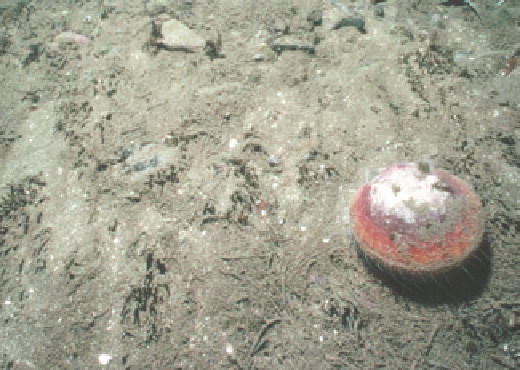Environmental Engineering Reference
In-Depth Information
give guest classroom lectures and lead some of the
field trips.
In a few decades, today's children will be run-
ning the park and the local political system. If they
understand the ecological importance of their local
environment, they are more likely to protect and sus-
tain its biological resources. Janzen believes that edu-
cation, awareness, and involvement—not guards and
fences—are the best ways to restore degraded ecosys-
tems and protect largely intact ecosystems from un-
sustainable use.
the open sea because of the greater variety of produc-
ers, habitats, and nursery areas in coastal areas.
Third,
biodiversity is higher in the bottom region of the ocean
than in the surface region because of the greater variety
of habitats and food sources on the ocean bottom.
We should care about aquatic biodiversity because
it helps keep us alive and supports our economies.
Marine systems provide a variety of important ecolog-
ical and economic services (Figure 5-25, p. 97), as do
freshwater systems (Figure 5-34, p. 104).
Natural Capital Degradation: Major Human
Impacts on Aquatic Biodiversity
Humans have destroyed or degraded a large
proportion of the world's coastal wetlands, coral reefs,
mangroves, and ocean bottom, and overfished many
marine and freshwater species.
The greatest threat to the biodiversity of the world's
oceans is loss and degradation of habitats, as summa-
rized in Figure 5-33, p. 103. For example, more than
one-fourth of the world's diverse coral reefs have been
severely damaged, mostly by human activities, and
another 70% of these reefs may be severely damaged
or eliminated by 2050.
Many sea-bottom habitats are also being degraded
and destroyed by dredging operations and trawler
boats, which, like giant submerged bulldozers, drag
huge nets weighted down with heavy chains and steel
plates over ocean bottoms to harvest bottom fish and
shellfish. Each year, thousands of trawlers scrape and
disturb an area of ocean bottom about 150 times larger
than the area of forests clear-cut each year (Figure 8-29).
In 2004, some 1,134 scientists signed a statement urging
the United Nations to declare a moratorium on bottom
trawling on the high seas.
8-9 SUSTAINING AQUATIC
BIODIVERSITY
Science: What Do We Know
about Aquatic Biodiversity?
We know fairly little about the biodiversity
of the world's marine and freshwater systems that
provides us with important economic and ecological
services.
Although ocean water covers about 71% of the earth's
surface, we have explored only about 5% of the
earth's global ocean and know relatively little about
its biodiversity and how it works. We also know rela-
tively little about freshwater biodiversity. Scientific
investigation of poorly understood marine and fresh-
water aquatic systems is a
research frontier
whose
study could result in immense ecological and eco-
nomic benefits.
Scientists have established three general patterns
of marine biodiversity.
First,
the greatest marine biodi-
versity occurs in coral reefs, estuaries, and the deep-sea
floor.
Second,
biodiversity is higher near coasts than in
Figure 8-29
Natural capital degradation:
area of ocean bottom before (left) and after (right) a trawler net
scraped it like a gigantic plow. These ocean floor communities can take decades or centuries to recover.
According to marine scientist Elliot Norse, “Bottom trawling is probably the largest human-caused disturbance
to the biosphere.” Trawler fishers disagree, claiming that ocean bottom life recovers after trawling.




